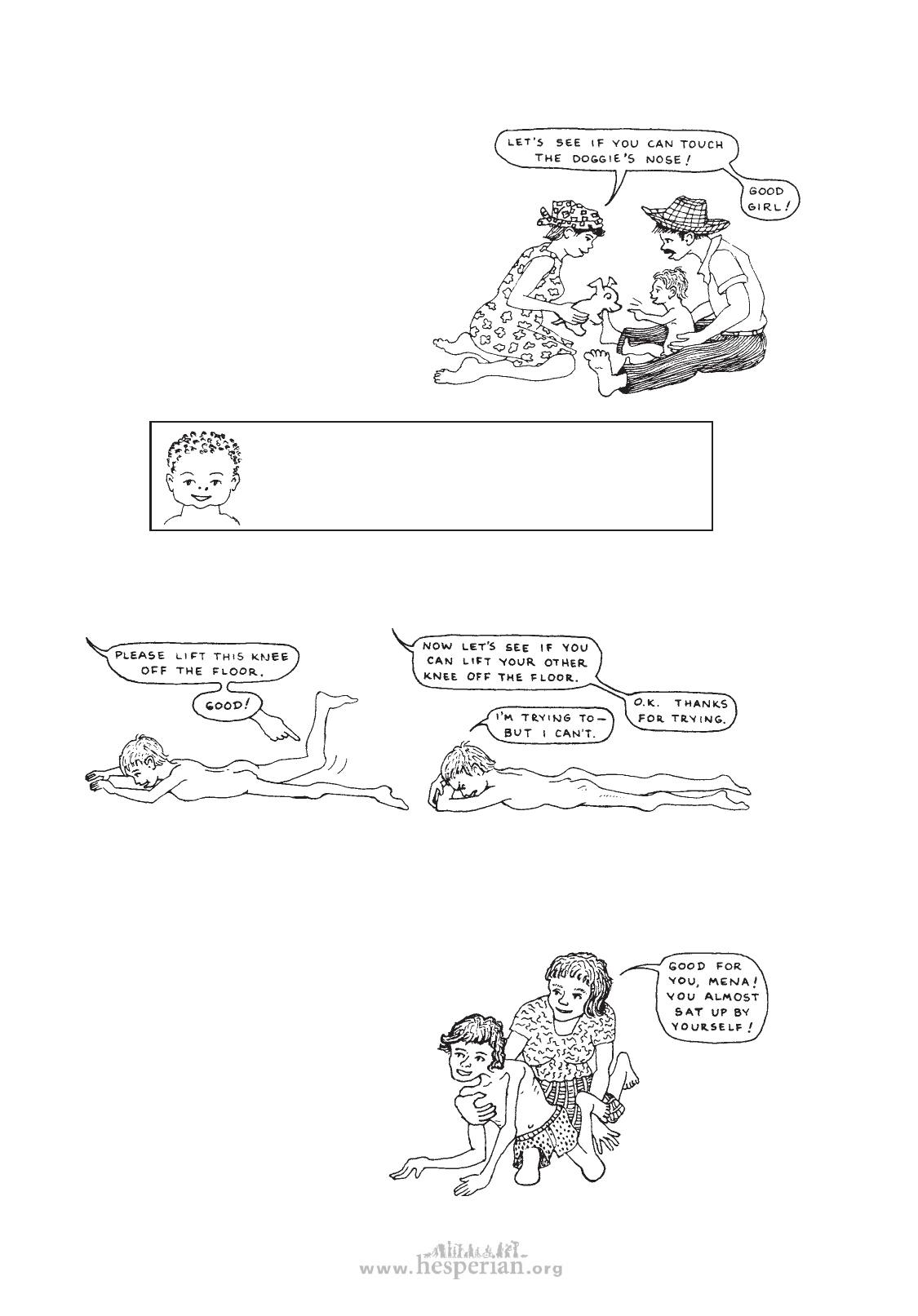
26 chapter 4
• Try to make the examination interesting and fun for the child. Turn it into a game
whenever possible. For example:
When you want to test a child’s
‘eye-to-hand coordination’ (for
possible balance problems or
brain damage) you might make a
game out of having the child
touch the nose of a doll. Or
have her turn on a flashlight
(torch) by pushing its button.
Also, when he begins to get
restless, stop examining for a
while and play with him, or let
him rest.
It is best to examine a child when he is well-rested,
well-fed, and in a ‘good mood’— and when you are,
too. (We know this will not always be possible.)
• When a child is weaker or has less control on one side than the other,
first test the stronger side,
and then the weaker side.
By testing the good side first, you start by giving the child encouragement with what he
can do well. Also, if the child does not move the weaker side, you will know it is because
he cannot, and not because he does not understand or is not trying.
• As you examine the child,
give her lots of praise and
encouragement. When she
tries to do something for you
and cannot, praise her warmly
for trying.
Ask her to do things she
can do well and not just the
things she finds difficult,
so that she gains a stronger
sense of success.
Disabled village Children